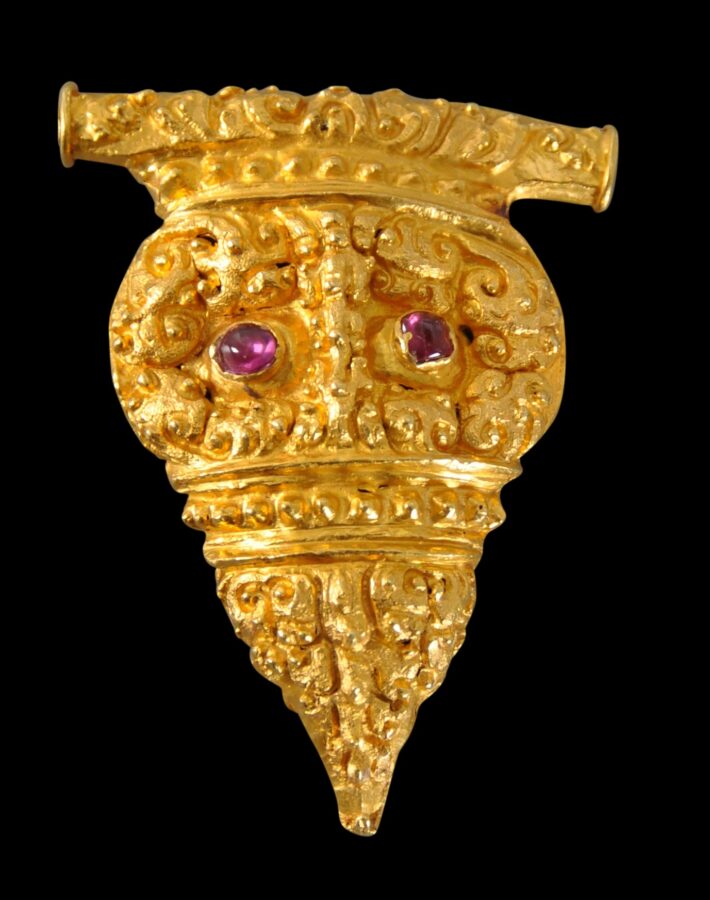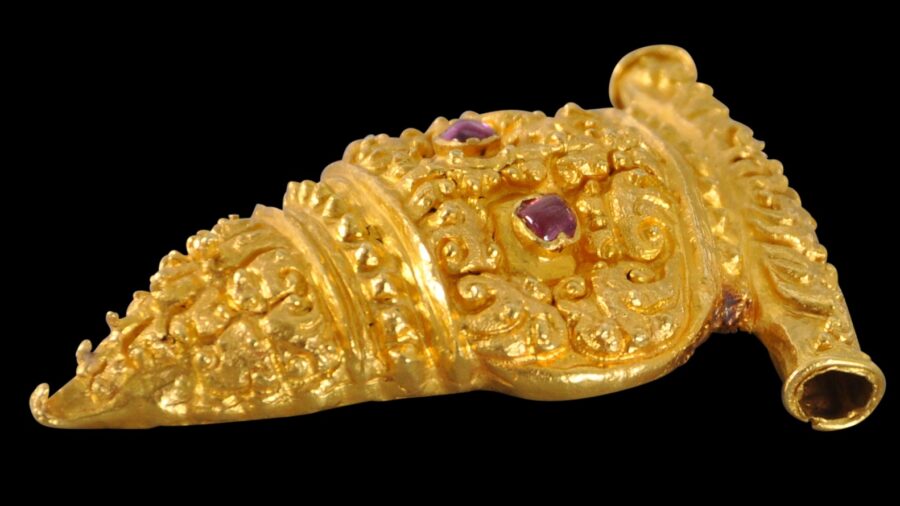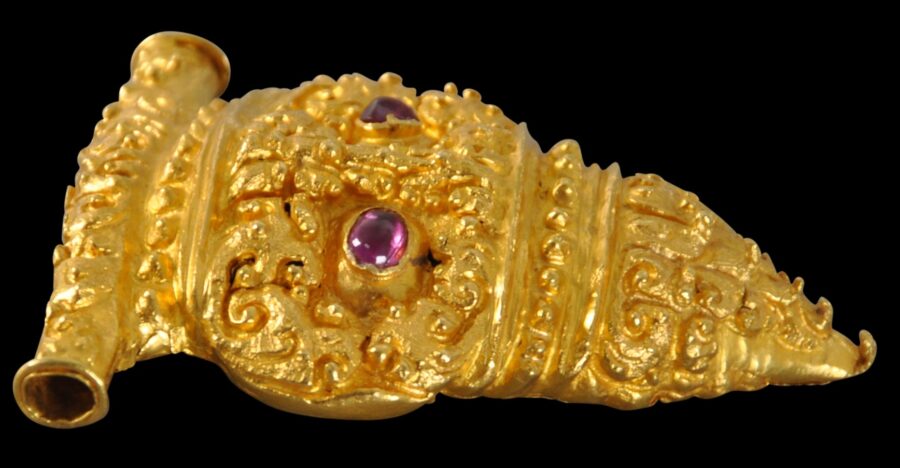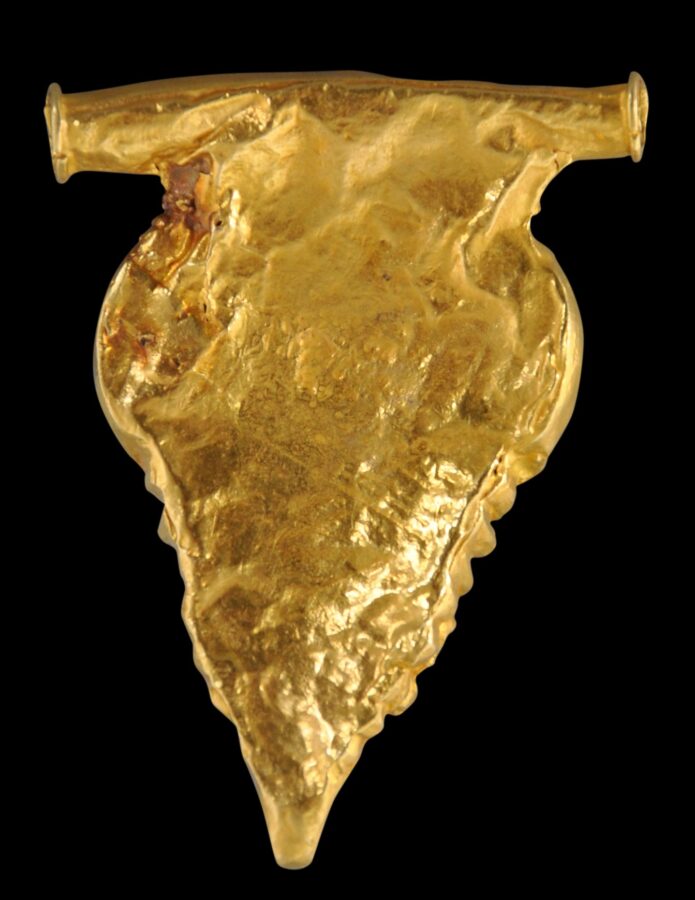This early gold, leaf-shaped pendant, pendant dates to 9th-10th century central Java. It might have been worn on a chain with other similar pendants. In ancient Java, gold necklaces were made for both personal wear and to adorn religious statues.
The example here has been repoussed in high relief with leafy curls and scrollwork, and two horizontal rope-like patterns, and inset with two ruby cabochons in box settings. The pendant has been made from two pieces of sheet gold that have been soldered together. It is likely that it is filled with some type of resin to give it more robustness. A gold cylinder attached to the top is to allow a chain or cord to be threaded to permit suspension.
Though leaf-like, the angular shape might be based on the tiger-claw pendants of South India which were worn for their talismanic properties, and which also gained favour in ancient Java at this time. Among the ancient Javanese, rubies were believed to have apotropaic properties, and could prevent nightmares and improve the heart of the wearer.
The gold is high carat. The pendant is robust and wearable.
References
Bremer, S., Goud der Goden: Uitt het oude Java, Wereldmuseum Rotterdam Publishers, 2014.
Lunsingh Scheurleer, P., Gold from Java/Goud uit Java, Gemeentemuseum Den Haag/W Books, 2012.
Miksic, J., Old Javanese Gold, Ideation, 1990.
Polak, J., Ancient Indonesian Gold of the Central and Eastern Javanese Periods 750-1550: A Selection, C. Zwartenkot Art Books, 2022.





